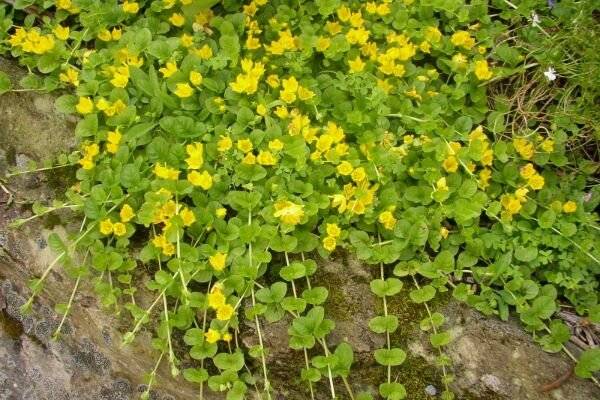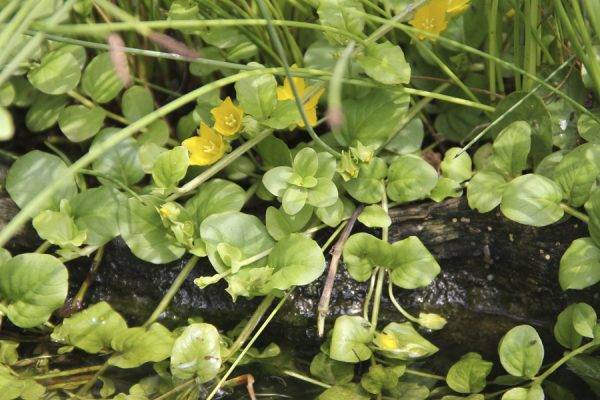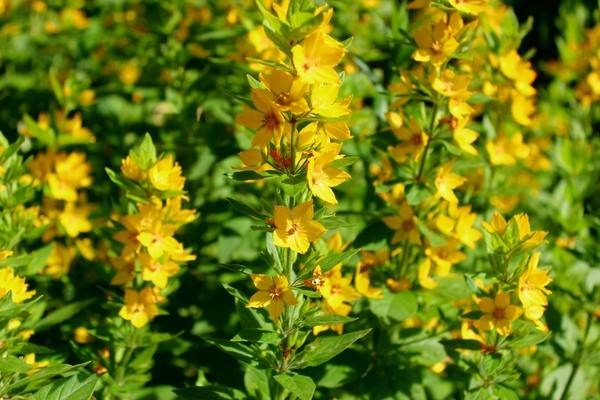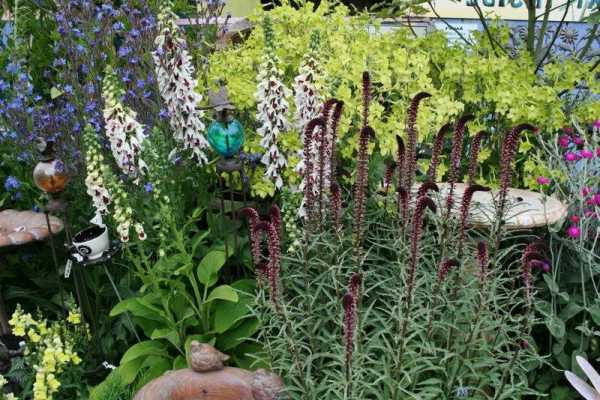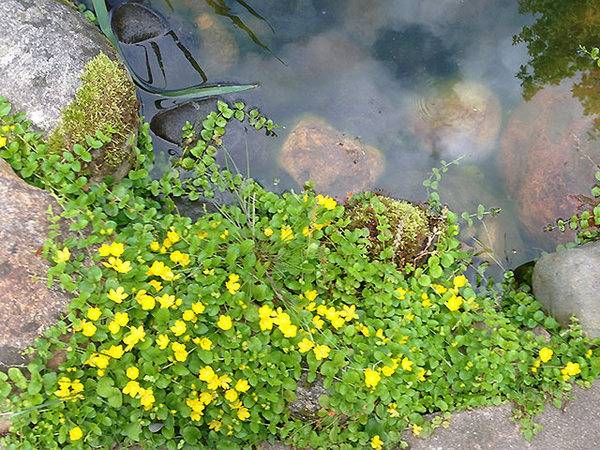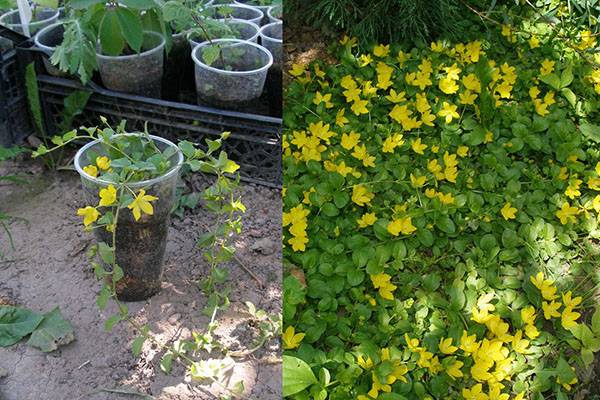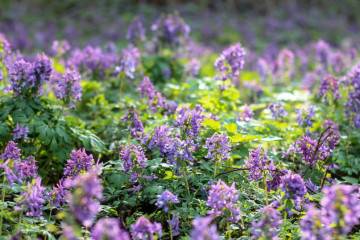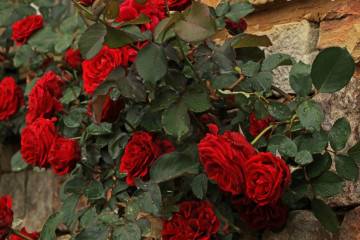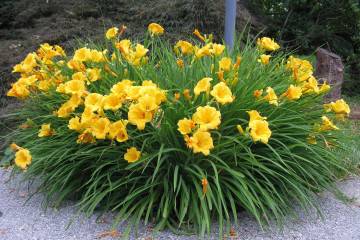Coin loosestrife
Content:
Coin loosestrife refers to discreet plants that can look harmonious in flower beds, landscape design. The culture is famous for its unpretentiousness and natural appearance without unnecessary frills.
What is a coin loosestrife
The distribution area of the coin loosestrife is the northern hemisphere and all regions with a temperate climate. On Russian territory, it can be found in the tundra and the Caucasian area.
Origin and appearance
Looseweed flowers are often called meadow tea. The culture is a representative of the Primroses family, belongs to perennials. She came to Russian lands from Western European countries.
Description of the flower
The perennial loosestrife will grow up to 5 cm, the length of the shoots reaches 40 cm.
The name of the culture comes from the peculiar form of foliage - it resembles a coin. The leaves are painted in dark green tones, they are located opposite on the stems. The buds have 5 yellow petals, they grow from deciduous sinuses.
It continues to bloom for about 3 weeks, it happens in late July - early August. In the wild, the culture throws out buds throughout the summer, until September.
Medicinal loosestrife: useful properties
The culture is not used in prepared medicines in mainstream medicine. In folk it is used because of the large amount of nutrients:
- astringent effect helps to cope with digestive disorders, relieves nausea and diarrhea;
- cooked decoctions relieve the symptoms of gastritis and gastric ulcer;
- infusions are used for wounds, arthritis, hemorrhoids, rheumatism and bruises;
- tea can cure coughs and colds.
The tea drink is prepared according to the following scheme: 2 teaspoons of dry powder are poured into a glass of boiling water and kept for 5 minutes, filtered. The infusion is prepared from 1 glass of fresh boiling water and 1 tbsp. a spoonful of dried leaves, the finished product is infused for 2 hours. The resulting solution is divided into 4 doses.
Main types and varieties
Botanists distinguish about 110 representatives of the culture; 8 more varieties of it are grown on personal plots.
Loose leaf (Lysimachia Punctata)
The shrub grows up to 0.5 m. It belongs to the herbaceous subspecies. Shoots are straight, pubescent with a large number of leaves that grow from stems and do not have cuttings. Spotted loaf blooms in June, its buds are localized at the tops and resemble yellow cones.
Common loafers
The shrub is most often found in forests, meadows and marshes. Common verbeynik has lanceolate foliage, located in 3-4 pieces. around the escape. The leaves resemble pussy willow cones, and the yellow buds resemble a five-pointed star.
Lily of the valley
It grows up to one meter in height, characterized by straight and strong stems. Lily-of-the-valley, dense-flowered loosestrife is determined by large foliage with an oblong shape and small flowers, collected in inflorescences.
Looseberry yellow
A popular variety of yellow loosestrife, or Goldilocks, includes Aurea, whose foliage has an unusual golden tone. It belongs to the ground cover, when planted on a personal plot, it evenly covers it with a golden carpet.
Verbeynik cage
The culture is rarely found in Russian territories, more often it can be seen in the Chinese and Japanese provinces. The cage-shaped loosestrife is an erect subspecies with a height of up to 1 m. The shrub has long foliage, up to 15 cm, the diameter of the flowers is 1 cm. Star-shaped inflorescences of an unusual black and white tone are 30 cm long.
The flowering of the subspecies begins in the last days of July and lasts about 3 weeks.
Ciliated loam
It is determined by tetrahedral shoots, the length of each is 70 cm. The ciliate loosestrife has oblong oval foliage, the color of the foliage depends on the subspecies and happens:
- classic green;
- red-leaved;
- dark chocolate;
- purple-burgundy hue.
Small buds are collected in inflorescences, located directly along the stem.
Verbeynik variegated
The description indicates that it stands out among the tribesmen with variegated foliage. Such an unusual color attracts attention even against the background of other, no less beautiful cultures.
In addition to the spotted loosestrife (Lysimachia Punctata in Latin) and other known variations of botany, several more subspecies are distinguished:
- purple loosestrife. It grows up to 45-90 cm, wine-red buds stand out favorably among the greenish-silvery foliage;
- brush-colored loosestrife. Decorated with small yellow flowers, collected in fluffy inflorescences. It grows up to 0.6 m, narrow lanceolate leaves are located on straight, strong shoots;
- white loosestrife is used to create snow-white flower beds or alpine hills, it grows up to 1.2 m. The length of the inflorescences is 20 cm.
Planting loosestrife in open ground
After the end of the summer season, many growers are collecting seeds for new shrubs. Sowing is carried out in advance so that young shoots are not damaged by frost.
Ready seedlings are planted after the soil has completely warmed up and in the absence of the threat of frost. The crop loves moisture and will benefit from planting near high water tables.
What is needed for landing
Planting work begins with soil preparation, it is enriched with complex mineral fertilizers. For successful growth and development, the land must be regularly moistened. Some gardeners prefer to plant bushes near an ornamental reservoir up to 10 cm deep.
Choosing the best place
For normal development, the flower requires a shaded area with a constantly moist substrate. It can grow in the same place for 10 years and does not require a transplant. The culture has no overestimated requirements for cultivation and care, for a long period it can be left without fertilization.
Step-by-step planting process
Before carrying out planting activities, it is necessary to remember the main property: loosestrife belongs to aggressive crops that can destroy nearby flowers and shrubs growing nearby. It requires special limiters:
- wooden;
- plastic;
- tarpaulin.
When landing in boxes, you must adhere to the following algorithm:
- A drainage layer is laid out at the bottom of the container, consisting of pebbles, pieces of broken brick or expanded clay.
- From above it is covered with soil.
- The root system of the bush is located in the center of the container, which has an optimal depth.
- After the void, it is covered with a fresh substrate, which is carefully tamped to avoid the formation of air chambers.
- In order for the bush to quickly get used to a new place and take root, it is watered abundantly.
Reproduction of loosestrife
There are three types of obtaining young shrubs:
- dividing the mother bush;
- cuttings;
- in a seed way.
Reproduction by apical shoots
Several strong and young stems are cut from the bush, placed in a glass of water. After a while, they will have roots and are ready to be transplanted into soil.
Reproduction by dividing the bush
An adult specimen is carefully dug up, divided into several parts and seated in new areas. Transplant procedures are performed in late autumn, and closer to summer, young bushes will delight with their green foliage.
Loosestrip care
To get a perfectly beautiful garden plot, you need to follow certain rules when caring for a crop.
Watering mode
Soil moistening is carried out regularly. Lostweed can survive a slight drought, but if the soil is constantly dry, it will quickly die.
Top dressing
During the period of vegetative development and budding, mineral and organic fertilizers are applied twice a month. With the onset of autumn, the amount of dressings is reduced.
When to transplant loosestrife
Transplant work is carried out as the bush grows. If the conditions for growth and development are favorable, then the transplant is carried out annually.
Preparing for winter
After the buds wither, the shrubs are necessarily cut off, at the same time the last fertilization is carried out. In winter, watering and feeding are prohibited, the plant must rest before the new season.
With proper care of the loosestrife in compliance with the basic requirements for cultivation, you can get healthy and beautiful shrubs that delight with long flowering. Experienced gardeners remind that a close planting of a culture next to other subspecies (especially if their roots are a bulb) threatens the death of the latter. Verbeinik does not tolerate competition and quickly cracks down on his fellows, reclaiming new plots of land.
